Imagine you have two sacks (A and B) with N and M balls respectively in it. Each ball with a known numeric value (profit). You are asked to extract (with replacement) the pair of balls with the maximum total profit (given by the multiplication of the selected balls).
The best extraction is obvious: Select the greatest valued ball from A as well as from B.
The problem comes when you are asked to give the 2nd or kth best selection. Following the previous approach you should select the greatest valued balls from A and B without repeating selections.
This can be clumsily solved calculating the value of every possible selection, ordering and ordering it (example in python):
def solution(A,B,K):
if K < 1:
return 0
pool = []
for a in A:
for b in B:
pool.append(a*b)
pool.sort(reverse=True)
if K>len(pool):
return 0
return pool[K-1]
This works but its worst time complexity is O(N*M*Log(M*M)) and I bet there are better solutions.
I reached a solution based on a table where A and B elements are sorted from higher value to lower and each of these values has associated an index representing the next value to test from the other column. Initially this table would look like:

The first element from A is 25 and it has to be tested (index 2 select from b = 0) against 20 so 25*20=500 is the first greatest selection and, after increasing the indexes to check, the table changes to:


Using these indexes we have a swift way to get the best selection candidates:
25 * 20 = 500 #first from A and second from B
20 * 20 = 400 #second from A and first from B
I tried to code this solution:
def solution(A,B,K):
if K < 1:
return 0
sa = sorted(A,reverse=true)
sb = sorted(B,reverse=true)
for k in xrange(K):
i = xfrom
j = yfrom
if i >= n and j >= n:
ret = 0
break
best = None
while i < n and j < n:
selected = False
#From left
nexti = i
nextj = sa[i][1]
a = sa[nexti][0]
b = sb[nextj][0]
if best is None or best[2]<a*b:
selected = True
best = [nexti,nextj,a*b,'l']
#From right
nexti = sb[j][1]
nextj = j
a = sa[nexti][0]
b = sb[nextj][0]
if best is None or best[2]<a*b:
selected = True
best = [nexti,nextj,a*b,'r']
#Keep looking?
if not selected or abs(best[0]-best[1])<2:
break
i = min(best[:2])+1
j = i
print("Continue with: ", best, selected,i,j)
#go,go,go
print(best)
if best[3] == 'l':
dx[best[0]][1] = best[1]+1
dy[best[1]][1] += 1
else:
dx[best[0]][1] += 1
dy[best[1]][1] = best[0]+1
if dx[best[0]][1]>= n:
xfrom = best[0]+1
if dy[best[1]][1]>= n:
yfrom = best[1]+1
ret = best[2]
return ret
But it did not work for the on-line Codility judge (Did I mention this is part of the solution to an, already expired, Codility challenge? Sillicium 2014)
My questions are:
- Is the second approach an unfinished good solution? If that is the case, any clue on what I may be missing?
- Do you know any better approach for the problem?